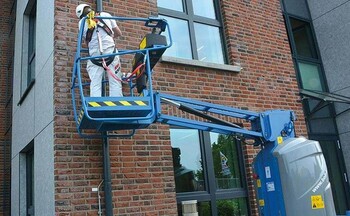DGUV - German statutory accident insurance
DGUV Rule 112-198
DGUV Rule 112-198 (formerly BGR 198) sets down binding provisions for the "Use of personal fall protection equipment". This rule provides a clearly-structured overview of all the components that fall under the category of personal fall protection equipment (PPE), how to use these correctly, and how these need to be labelled and certified.
Arresting systems in accordance with DGUV Rule 112-198
DGUV Rule 112-198 distinguishes between four basic types of arresting system:
- Guided type fall arrester with a flexible anchor line
- Guided type fall arrester with a rigid anchor line
- Arresting system using a self-retracting lifeline
- Arresting system using an energy absorber
What all of these arresting systems have in common is that they do not prevent a free fall but instead arrest the fall to protect the user from fatal injury caused by a collision. In addition to fall arrest systems, retention systems and work positioning systems are also described in this rule.
Choosing the right PPE
Alongside a list of all the required PPE labels, this rule also provides an overview of all the different fields of application and the respective clearance distances. The basic rule of thumb is: The clearance distance required to be able to use a fall arrest system is calculated from the sum of all the relevant components and factors that alter the system in the event of a fall and the respective safety distance needed to avoid hitting the next level.
In addition, the rule also contains recommendations for combining different equipment components. It is pointed out, for example, that helmets with a chin strap that comply with EN 397 provide protection against serious head injury in the case of a fall.
PPE equipment usage and service life
PPE equipment has a limited life cycle, resp. durability. To determine whether it can continue to be used safely, regular inspections need to be carried out by an expert. The entrepreneur is responsible for carrying out these inspections. The inspection interval depends on how the equipment is used as well as the respective operating conditions. However, these inspections must be carried out prior to the initial usage and then at least once a year.

